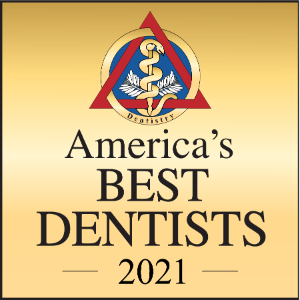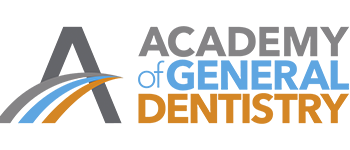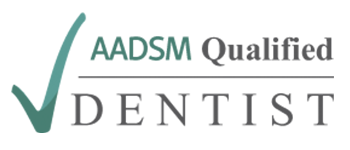Emergency dental insurance coverage can often be confusing; a clear understanding is essential for effective utilization. The main challenges revolve around identifying what qualifies as an emergency, navigating the coverage structure, and managing potential financial obligations.
Identifying what qualifies as an emergency is the first step. Insurance companies typically define emergencies as unexpected, urgent conditions that require immediate attention, such as severe pain, substantial trauma, or serious infections. For instance, a sudden sharp toothache that suggests an abscess could be considered an emergency, whereas mild discomfort from a loose filling might not.
Understanding the coverage structure is also crucial. Dental insurance plans categorize care into preventive, basic, and major services, each typically covered at different rates. For example, emergency procedures like extractions might fall under basic services, often covered at 70-80%, while preventive care like check-ups might receive coverage at 100%.
Managing financial obligations means anticipating out-of-pocket expenses due to limits such as deductibles or co-payments. Patients should expect to cover certain costs, like meeting a deductible before full benefits apply or paying a co-payment for emergency treatments. For these scenarios, it’s essential to review and understand the details of your insurance plan to avoid surprises.
Understanding What Emergency Coverage Really Means
Effective navigation of dental insurance during emergencies starts with a clear comprehension of coverage scope. The definition of ’emergency,’ coverage nuances for different treatment categories, and the costs not accounted for by insurance are three primary considerations.
The term ’emergency’ in dental insurance typically refers to acute conditions demanding immediate action. For example, incidents such as severe toothaches indicating potential abscesses or injuries resulting in major dental damage satisfy this criterion. Such situations are stark contrasts to routine issues like usual tooth fillings, which, despite requiring attention, are not classified as emergencies and thus, don’t activate emergency coverage provisions.
In the realm of coverage parameters, a variety of treatments fall under different insurance categories, each with its own coverage rules. Procedures addressing life threatening and urgent issues generally receive more favorable coverage, acknowledging their critical nature. Meanwhile, routine or preventative measures may have less comprehensive coverage, reflective of their planned and non urgent status:
- Emergency Definition: Acute conditions requiring immediate action like severe pain or major trauma
- Coverage Categories: Different treatment types receive varying levels of insurance coverage
- Financial Responsibility: Out of pocket expenses remain despite having insurance coverage
- Planning Importance: Understanding costs beforehand prevents unexpected financial strain
Awareness of patient financial responsibilities despite coverage is also essential. Even with insurance, certain out of pocket expenses are anticipated, such as copays or costs that surpass coverage limits.
Navigating Coverage Complexities
Grasping the subtleties of emergency dental coverage is important for optimizing the benefits in the event of a crisis. The differentiation in coverage levels, the financial thresholds set by deductibles, and the strategic selection of providers each play a fundamental role in this understanding.
The type of dental treatment required often dictates the coverage rate by the insurance plan. Preventive measures, like routine cleanings, are usually most comprehensively covered, reflecting the plan’s emphasis on proactive health measures. Basic procedures, which could include simple extractions or fillings that can become urgent, are generally covered at a moderate percentage. Major services, possibly comprising of complex surgeries or extensive restorative work needed urgently, might see the lowest coverage percentage.
Deductibles establish a financial barrier before full benefits kick in. Until this initial sum is paid out-of-pocket, one may only receive partial coverage for their dental treatments, meaning higher immediate costs during emergency situations. Being aware of where you stand with your deductible can be crucial in estimating the total out of pocket expenses.
Utilizing in-network providers can significantly affect benefit utilization. Staying within the approved list of providers ensures maximum coverage as per one’s plan. It prevents the additional costs and complexities that can arise from using out of network services, making it an important consideration for maintaining financial stability during dental emergencies.
Managing Costs Beyond Insurance
Emergency dental insurance can be a helpful financial buffer, but it often comes with limitations that patients may not fully anticipate. While it’s designed to ease the burden of urgent care costs, insurance policies frequently include fine print that can leave individuals unprepared for significant out-of-pocket expenses. Understanding these limitations in advance can help patients make informed decisions during stressful moments.
One of the most common financial hurdles is the annual maximum, the total amount your insurance will pay in a given year. If a dental emergency happens after you’ve already used much of your benefits on routine care or prior treatments, the remaining costs may become your responsibility. Additionally, many new insurance plans impose waiting periods, meaning emergency care may not be covered at all if it’s needed before that waiting window has expired.
Deductibles and copays further complicate coverage. A deductible is the amount you must pay out-of-pocket before your insurance begins to contribute, and it can be substantial, particularly for emergency procedures. Copays, which are the fixed costs per visit or procedure, can also add up quickly, especially if multiple appointments or follow-ups are required. These financial layers highlight the importance of reviewing policy details carefully before an emergency arises.
Coverage exceptions can be equally frustrating. If you receive treatment for a pre-existing condition or visit a provider who isn’t within your insurance network, your coverage may be denied or reduced significantly. In some cases, patients assume they are protected only to discover that out of network fees or previously untreated dental issues are excluded from their benefits:
- Annual Maximums: Yearly benefit limits can leave patients paying full costs later in the year
- Waiting Periods: New coverage delays may require full out of pocket payment for emergencies
- Deductible Impact: Significant amounts must be paid before insurance coverage begins
- Network Importance: Out of network care typically results in substantially higher patient costs
Understanding the financial structure of your dental insurance can make a real difference when an emergency occurs. Reviewing your plan’s limits, exclusions, and timelines ahead of time helps you avoid unpleasant surprises when time and clarity are already in short supply. By proactively planning around potential gaps in coverage, you’re better equipped to protect your oral health and your wallet before a dental crisis demands immediate action.
Smart Strategies to Reduce Out-of-Pocket Costs
To reduce the financial impact of dental emergencies, a strategic approach to insurance and payment options is important. This includes the careful selection of service providers, open financial discussions, and leveraging savings accounts specifically designed for health-related expenses.
Selecting dental care within an insurance network can significantly lower out-of-pocket costs. By choosing in-network providers, patients maximize their insurance benefits and avoid the extra charges that often accompany out-of-network services. The key is to confirm the network status of a provider before a dental emergency arises, thus ensuring that one isn’t caught off guard by additional fees during a stressful time.
Transparency in payment discussions is another proactive measure. Discussing all expected costs and payment options with the dentist prior to any procedure can prevent surprises. Dentists can provide estimates that detail the total cost of treatment, including which parts are covered by insurance and which are not, enabling patients to plan financially for their portion of the bill.
Utilizing Flexible Spending Accounts (FSAs) and Health Savings Accounts (HSAs) can additionally ease the burden of unexpected dental expenses. Contributions to these accounts are tax-advantaged, meaning patients can use pre-tax income to pay for qualified dental procedures, including emergencies. Patients should regularly review their FSA and HSA balances and benefits to ensure they are prepared to use these funds when needed.
Making Informed Decisions About Your Coverage
Understanding your dental insurance policy thoroughly is the cornerstone for making informed decisions in emergency situations. To avoid unforeseen financial burdens and stress, focus on grasping your policy’s specifics, initiating proactive discussions with your insurer, and knowing how to leverage your coverage during unexpected dental emergencies.
Familiarize yourself with the most critical aspects of your policy. This involves knowing the details of what treatments are covered and to what extent, including percentages for various treatment categories and specific exclusions. For example, ensure you understand how your plan approaches emergencies versus routine care, and the process for claims and reimbursements. This foundational knowledge enables you to anticipate and plan for potential costs effectively.
Engage in direct communication with your insurance provider before an emergency arises. Discussing and clarifying terms of your policy, such as deductibles, co-pays, and annual maximums, can prevent misunderstandings during high-pressure situations. A clear dialogue about the plan’s specifics can provide peace of mind and facilitate a smoother process when seeking urgent dental care.
Knowing how to utilize your insurance when an emergency strikes enables swift and confident action. Understanding the protocols for obtaining emergency care, such as the need for pre-authorization or the immediacy with which treatment can begin, equips you to navigate these high-stress scenarios with assurance, minimizing delays and reducing the emotional toll of urgency.
Alternative Financial Options When Insurance Falls Short
When dental insurance is inadequate in the face of emergency costs, it’s essential to explore alternative financing methods. Seeking out dentist payment plans, utilizing sliding-scale services, and tapping into local aid resources can provide the necessary financial relief.
Many dental practices understand the limitations of insurance and are prepared to work with patients through customized payment plans. These tailored arrangements can allow for manageable installments spread over time, making it easier to afford necessary treatments without the immediate burden of full upfront payment. As such, discussing payment flexibility with your dentist can be a crucial step when confronted with unexpected dental expenses.
Community health centers and specialized clinics often offer sliding-scale fee structures. This system adjusts the cost of dental care based on a patient’s income, making services more accessible to those with lower incomes or limited insurance coverage. Seeking out these providers can significantly reduce financial strain:
- Payment Plans: Customized arrangements allow manageable installments over time
- Sliding-Scale Fees: Income-based cost adjustments make care more accessible
- Community Resources: Local charities and non-profits may offer financial assistance
- Qualification Support: Many programs help those with limited insurance coverage
Local charities and non-profit organizations may offer financial assistance for dental emergencies. This support typically comes in the form of grants or low-cost services for those who qualify.
Building Prevention Into Your Strategy
Proactive measures are fundamental in minimizing the potential financial and health impact of dental emergencies. Establishing a preventive dental care routine, adapting insurance coverage during enrollment periods, and leveraging digital tools for immediate access to insurance information are critical steps in this strategy.
Regular check-ups play an instrumental role in early detection and treatment of dental issues, effectively reducing the possibility of emergencies. Scheduled visits to the dentist allow for professional assessments that can catch and address small problems before they escalate into urgent issues, thereby circumventing the need for more extensive and costly emergency procedures.
Insurance plans should be reviewed and adjusted during open enrollment periods to ensure they meet changing dental health needs. This is a prime opportunity to examine the fine print of your policy, reassess your coverage in light of the past year’s dental history, and make any necessary upgrades or changes to your existing plan to enhance your protection in the upcoming year.
Technology serves as an ally in maintaining dental well-being. Insurer apps can provide immediate access to policy details, network provider directories, and even facilitate swift communication with insurance representatives during emergencies. By using these digital tools, individuals can stay informed and agile, ready to activate their insurance efficiently when unexpected dental situations arise.
Your Path to Emergency Preparedness
Confronting dental emergencies successfully depends on a well-informed approach and preemptive planning. This encompasses a deep understanding of your insurance policy’s details, strategic financial management, and ensuring regular readiness for potential dental crises.
A thorough comprehension of your dental insurance coverage is crucial. You should familiarize yourself with what qualifies as an emergency, the extent of the coverage provided, and any exclusions or limitations that may apply. This understanding can prevent unpleasant surprises when seeking care and allows for clearer decision-making during high-stress periods. Proactive management of your dental health finances is also vital, and by regularly reviewing your insurance plan, setting aside emergency funds, or considering supplemental coverage options, you can create a financial cushion.
At Dr. Bethaney Brenner’s practice in Burlington, CT, we understand that navigating emergency dental coverage can be overwhelming, which is why we’re committed to helping our patients understand their insurance benefits and explore all available options for managing emergency dental costs effectively. Maintaining a state of constant preparedness includes having up-to-date information about your dental insurance and emergency care options, keeping contact details for your preferred dental practice and the nearest emergency dental clinic to save valuable time when quick action is required.
Ready to better understand your emergency dental coverage and ensure you’re prepared for any dental crisis? Contact Dr. Bethaney Brenner’s practice today to learn how we can help you navigate your insurance benefits, explore financial options, and develop a comprehensive plan that ensures you’ll have access to the emergency dental care you need without unexpected financial burdens.







